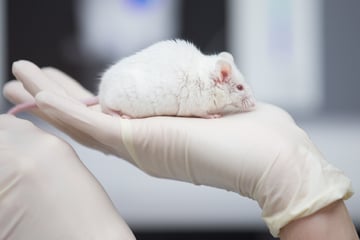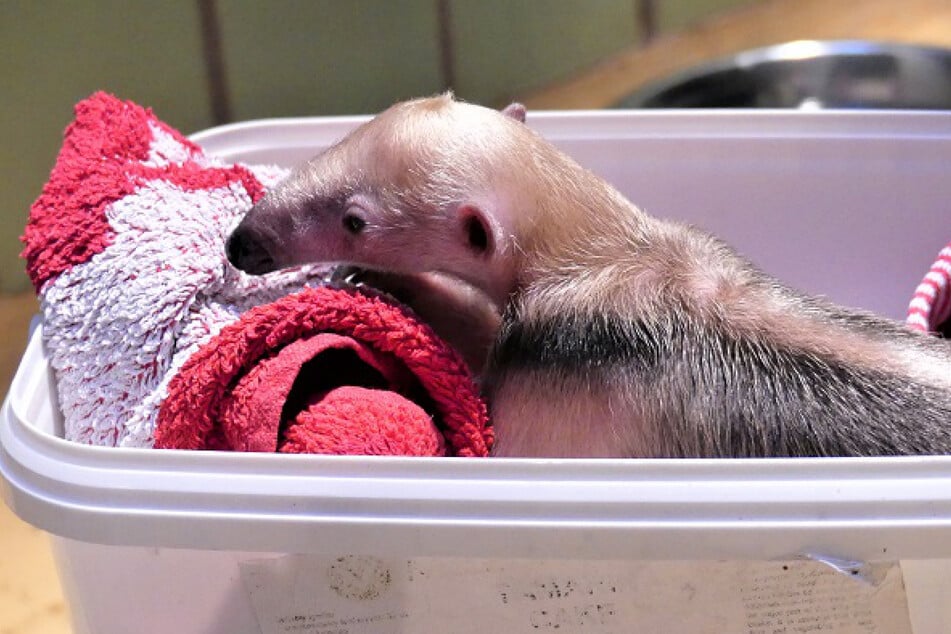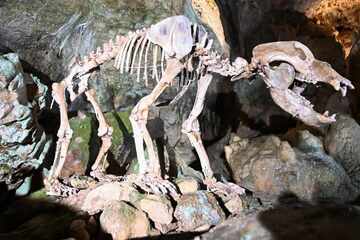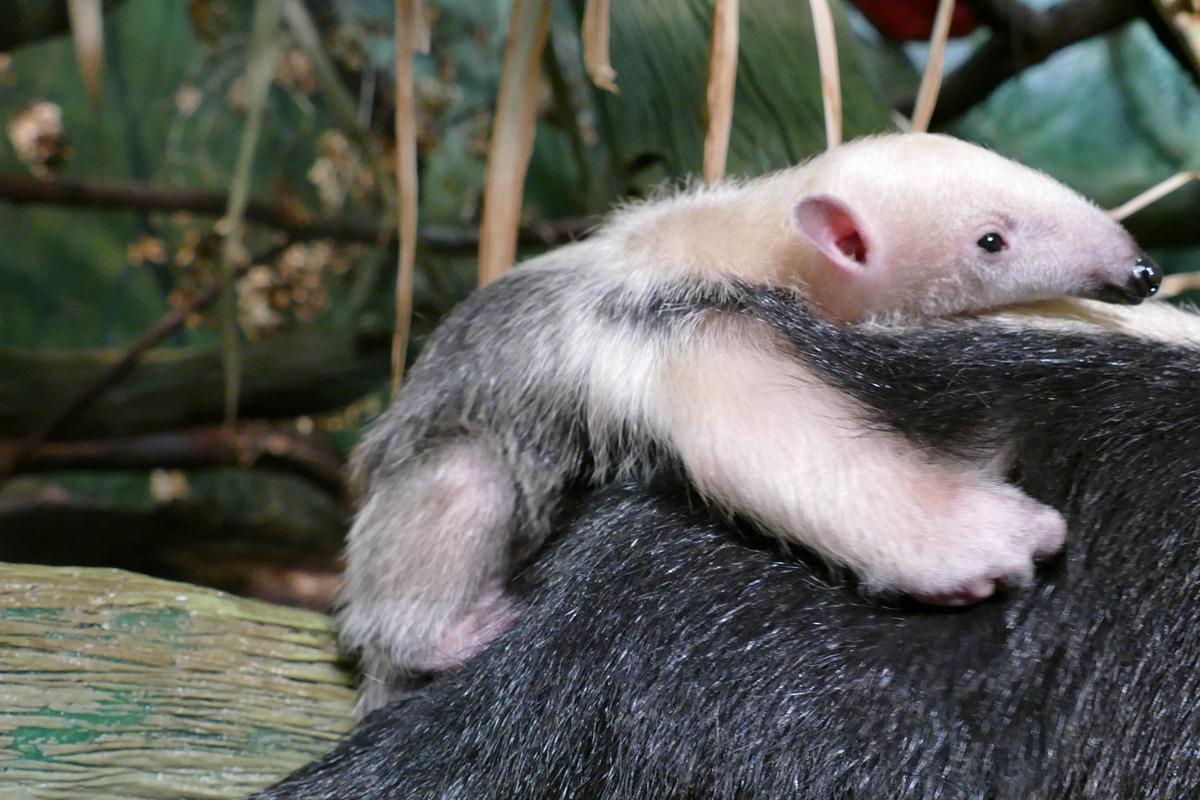In mid-December, the little anteaters had their sweet offspring at the Frankfurt Zoo. Meanwhile you can see the baby piggybacking around on mom’s back.
Frankfurt am Main – In Frankfurt Zoo the little anteaters had sweet offspring in mid-December. The baby anteater can now be seen running around the Grzimekhaus more often on its mother’s back.
–
The little anteater baby clings to Mama Pepita. She carries her young piggyback through the enclosure at the Frankfurt Zoo. © Frankfurt Zoo
The Grzimekhaus of the Frankfurt Zoo has been home to a very special kind of animal since 1978. In addition to many nocturnal animals, there are also numerous rare and very interesting animal species in the daytime section.
The little anteaters also have their enclosure in said house. Good to know: There are several types of anteaters – the little ones (tamanduas) are about 47 to 88 centimeters from head to torso and have a 40 to 67 centimeter long tail. Their body weight varies between two and seven kilograms.
Nothing is known about the name of the newest anteater. According to zoo curator Dr. Johannes Köhler with the cute baby animal, however, about a female who currently weighs about 700 grams.

–
Great news: the number of animal experiments in Saxony-Anhalt is decreasing
–
–
At the moment the cub is either lying in its box or Mama Pepita is carrying the little one piggyback through the enclosure.
The typical black and white color of the fur, which flows into one another in mother and child, is nice to see here. The baby is always well camouflaged.
–

The little anteater baby looks a little sleepy. The so-called tamanduas have been in Frankfurt Zoo since 1998. © Zoo Frankfurt
Mother Pepita is nine years old and is now a mother of three.
Papa Anteater Yoda lives separately from the two as tamanduas remain solitary throughout their lives. Male and female anteaters only come together to mate.
After birth, Tamandua babies ride around the world on their mother’s back for six months. Until the cubs are almost as big as their mother.

–
15,000 years old: The bear cave has its bear back
–
–
The cubs then stay with their mother for about another six months until they reach sexual maturity.
At the age of one year, the young tamanduas finally separate from their mother and live as loners.
–
Southern tamanduas have been bred at Frankfurt Zoo since 1998. In the wild, the animals can be found in rainforests and in the savannas of South America. In the Manú National Park (Peru), the Frankfurt Zoo has a focus on global nature conservation work.
–

